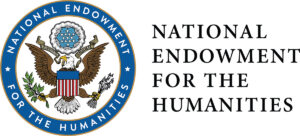by Jenifer Smolnik
Ellington High School, Ellington
TEACHER'S SNAPSHOT
Subjects:
Immigrants, Propaganda, World War I
Course Topics/Big Ideas:
Role of Connecticut in U.S. History
Town:
Bridgeport, Norwich, Statewide
Grade:
High School
Lesson Plan Notes
Like many wartime leaders, President Woodrow Wilson used propaganda to encourage nationalism and patriotism among Americans. The portrayal of America as the potential savior of the Allied powers in Europe influenced American attitudes about the sacrifices required to win the war. The American government delivered many of these messages through the effective use of mass media.
ESSENTIAL QUESTION
SUPPORTING QUESTIONS
- What type of messages are being portrayed in words and/or pictures?
- How do you think each segment of the population (e.g. immigrants, German-American citizens, other foreign-born American citizens, labor leaders, pacifists, and Socialists) might have received and interpreted these advertisements and appeals?
- What do all of these propaganda materials have in common?
ACTIVITY
Students will read and reflect on the propaganda materials and discuss the supporting questions in pairs or groups. Students will use a KWL chart or Library of Congress Primary Source Analysis Tool (download Teacher’s Guide) to organize their work. Groups will share their materials and findings with the rest of the class, discuss the supporting and compelling questions, and then develop additional questions of their own.
OPPORTUNITIES FOR ASSESSMENT
Writing from the point of view of one segment of the population in the United States at that time, students will compose a brief (two-paragraph) letter to President Woodrow Wilson expressing their thoughts, feelings, and ideas about American entry into the war. Students may choose to write from the perspective of:
- German-Americans (including Hutterites and Mennonites)
- Other Foreign-Born American Citizens
- Socialists
- Pacifists
- Labor Leaders
- Women
- Draft-Age American Citizens
- Older American Citizens
- Another group that they have identified (with approval)
This letter may express concern or support, based on the students’ interpretation of the propaganda images. Students may include evidence from readings and reference other sources they have investigated.
Students will then select a different group that might have had a different view on American entry into the war and write a second letter to President Woodrow Wilson from this perspective.
Working in pairs or groups, students will present their letters for discussion and reflection.
RESOURCE TOOL KIT
Things you will need to teach this lesson:
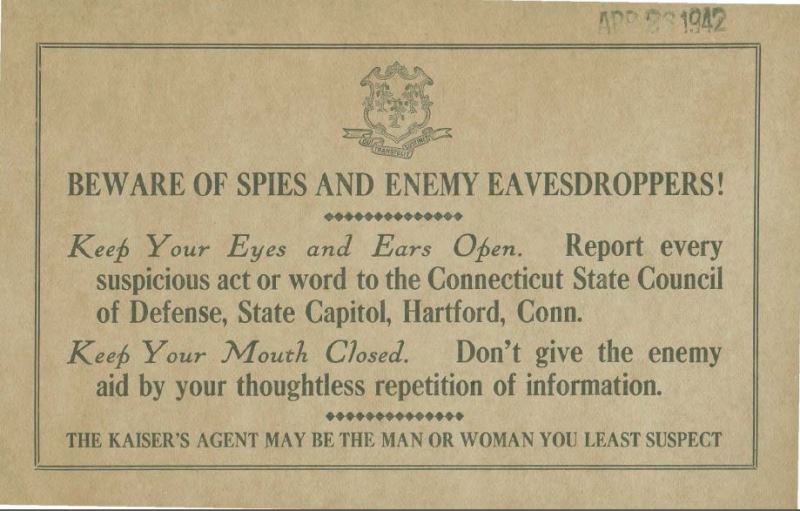
Beware of Spies and Enemy Eavesdroppers!, Connecticut State Council of Defense, ca. 1914-1918. Connecticut State Library.
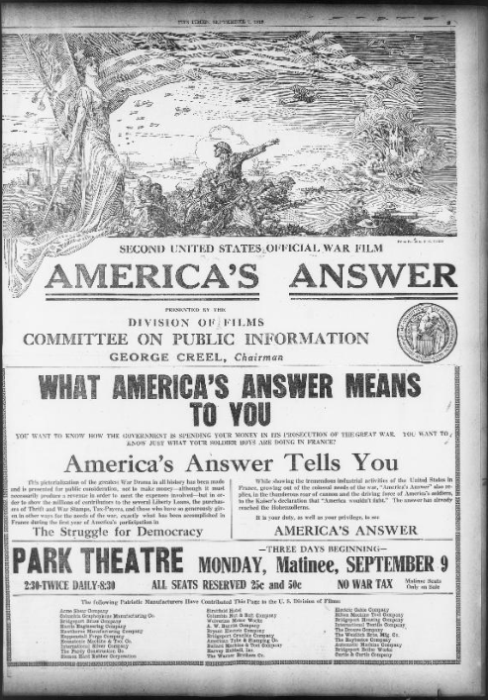
Second United States Official War Film, “America’s Answer,” Presented by the Division of Films Committee on Public Information, George Creel, Chairman. A full page advertisement in the Bridgeport Times and Evening Farmer, September, 7, 1918. Library of Congress, Chronicling America: Historic American Newspapers.
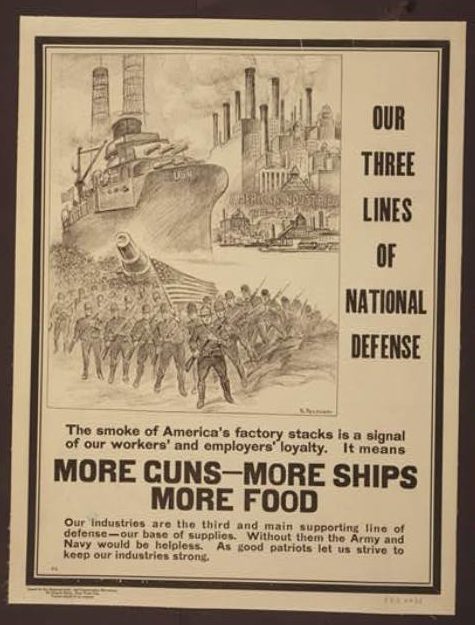
R. Peckner, Our Three Lines of National Defense, poster by the National Industrial Conservation Movement, 1917. Library of Congress, Prints and Photographs Division.
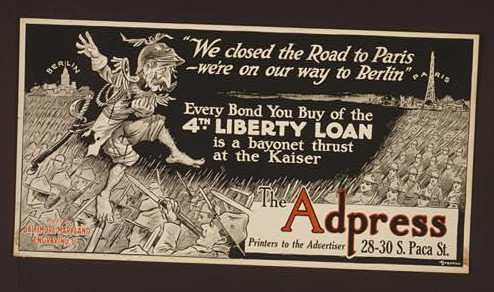
We closed the road to Paris – we’re on our way to Berlin. Every bond you buy of the 4th Liberty Loan is a bayonet thrust at the Kaiser, poster by AdPress, 1917. Library of Congress, Prints and Photographs Division.
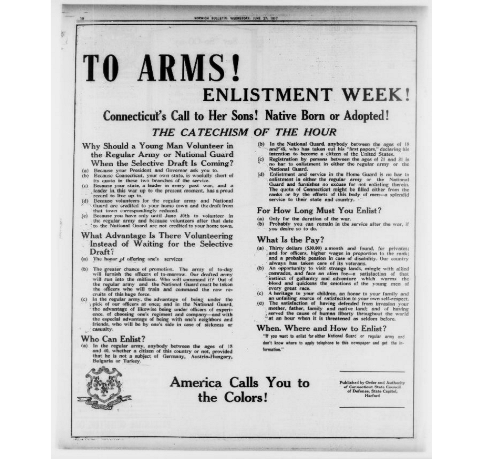
“To Arms! Enlistment Week! Connecticut’s Call to Her Sons! Native Born or Adopted!” A full page advertisement in the Norwich Bulletin, June 27, 1917. Library of Congress, Chronicling America: Historic American Newspapers.

Library of Congress Primary Source Analysis Tool Worksheet
ADDITIONAL RESOURCES
Places to GO
Connecticut State Library – Hartford, CT
World War I Memorials – Visit the Connecticut State Library’s Connecticut in World War I website for an interactive map to find a memorial near you
Things To DO
Contribute to the Connecticut State Library’s Connecticut in World War I project – Community page
Websites to VISIT
Library of Congress: World War I Poster Collection
Library of Congress: Guide to World War I Materials
International Encyclopedia of the First World War: Propaganda
Connecticut State Library: Connecticut in World War I
Library of Congress: Chronicling America, Historic American Newspapers
Connecticut Digital Newspaper Project: Guides to Newspaper Content
Articles to READ
Wells, Robert A. “Propaganda at Home (USA).” International Encyclopedia of the First World War, ed. by Ute Daniel, Peter Gatrell, Oliver Janz, Heather Jones, Jennifer Keene, Alan Kramer, and Bill Nasson, issued by Freie Universität Berlin, Berlin, 2014.
How We Advertised America: The First Telling of the Amazing Story of the Committee on Public Information That Carried the Gospel of Americanism to Every Corner of the Globe by George Creel. New York: Harper & Brothers, 1920.
Over Here: The First World War and American Society by David M. Kennedy. New York: Oxford University Press, 2004.
America’s Great War: World War I and the American Experience by Robert H. Zieger . Lanham, MD: Rowman & Littlefield, 2000.


